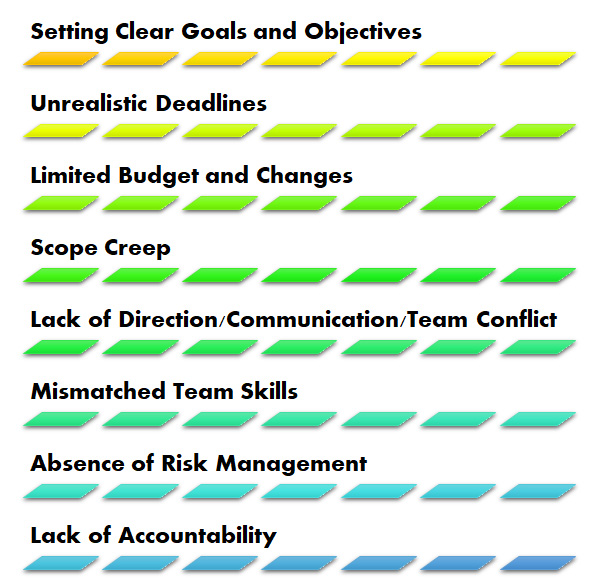Recent benchmarks have indicated that today’s process industry projects are implementing new technologies more than ever before. This should come as no surprise with the drive towards low carbon solutions, a circular economy, and other ESG initiatives. Examples of these technologies would include Carbon Capture, Recycled Plastic, Blue/Green Hydrogen, etc. Although projects applying newer or less-proven technologies carry extensively more business and project risk and uncertainty, it does not mean that these projects cannot be completed within the projected safety, quality, cost, and schedule targets. these projects most likely carry a higher level of cost contingency and schedule reserve at full funding authorization.
To effectively plan and execute these new technology initiatives, project development teams need to first recognize that new technology involves a higher level of complexity; not only the technology itself but the interfaces with standard project requirements. When developing the scope of work and project execution strategy, it is essential to recognize the nuances of these new technology projects. This includes, but is not limited to, the following:
- Bench test scale-up often includes untested parameters.
- Manufacturing and delivery of major equipment is often underestimated.
- Interface with base plant infrastructure needs more intensive technical evaluation and close collaboration with the technology developer/licensor.
- Recognition that the technology is not fully tested and there is a level of uncertainty with regard to the expected business results.
As the regularity of these projects intensifies throughout the process industry, the need for Project Management best practices when planning and implementing these types of projects will become apparent. Clear communication of ‘what is known’ and ‘what comes with a heightened level of uncertainty’ can help in assuring that these vitally important capital project ventures provide the business value owners are looking for in this new business environment.
As your organization prepares to transition to these newer technology projects, it is important to note that even though the new technologies appear to “make things easier,” the challenges in project execution are not so different from those encountered when implementing conventional technologies.
It is important to have a solid planning process and understanding of Project Management Best Practices for any project, new or traditional. Pathfinder continually recommends working in a collaborative environment by involving stakeholders from the beginning to ensure alignment with expected outcomes.
Below, we highlight 8 of the most common project management challenges. Although these challenges are common, we feel it is important to emphasize the importance of revisiting these to successfully execute projects based on new technology processes.

Setting Clear Goals and Objectives
It is important for stakeholders to recognize that the technology is not fully tested and there is a level of uncertainty regarding the business results.
To deal with this risk, a clear vision needs to be established and supported by defined objectives with realistic targets. Due diligence involves thorough technological and regulatory research to identify requirements for new projects that have a significant impact on company results. Project governance should play a substantial role as new technologies are being integrated into the business, including representation across different groups, such as process technology, operations, safety, quality, supply chain, and infrastructure within the project governance process. This will enable communication across various segments of the business and help identify additional needs while streamlining project implementation. Monitoring and regular status updates should be communicated to senior leadership throughout the project, as well as post-start-up to help determine if ROI was achieved or miscalculated.
We recommend two popular approaches: SMART (Specific, Measurable, Attainable, Relevant, and on Time) and CLEAR (Collaborative, Limited, Emotional, Appreciable, and Refinable), which go even further by adding criteria for completeness. This means that specific criteria for success are set so that you know when you have achieved your goal. We recommend a diligent BEAM exercise (Business Engineering Alignment Meeting) with realistic expectations for these new technology projects.
Unrealistic Deadlines
Executing projects with new technologies may well be different from traditional manufacturing processes. In order to ensure alignment with goals and deadlines, the planning should be comprehensive and require input from licensors, suppliers, or consultants with similar experience so that they can mentor the project team during the project development and consider Lessons Learned from similar projects.
As bench test scale-up often includes untested parameters, the Agile project management methodology, like Scrum process, should be implemented during the schedule development vs. the traditional waterfall. If any of these new technologies have been scaling from pilot plants to commercial plants, the cycle of adjustment and changes needs to be included in the planning process. In many cases, it will be necessary. For example, the replacement of materials or equipment that are not readily available when required or are so expensive that the project cannot afford it may necessitate modifications in the design.
Limited Budget and Changes
There is a risk of cost overruns with new technology implementation due to unpredictable issues, which would affect the sanctioned budget and create threats to the project execution. One such risk is the manufacturing and delivery of major equipment, which is often underestimated. A cost and schedule risk analysis should be performed to establish an appropriate level of contingency for this type of project. The Project Manager should adopt efficient cost management strategies to prevent straying from the agreed-upon budget.
Scope Creep
The fact that you are implementing new technologies does not save the project from potential scope creep - a classic project management challenge that refers to how the requirements of a project change from what was originally agreed at project initiation. As mentioned before, to deal with this challenge Pathfinder recommends the implementation of Agile/Scrum which allows the project team to focus on specific goals while continuously reviewing priorities and plans. In addition, the interface with base plant infrastructure needs more intensive technical evaluation and close collaboration with the technology developer/licensor while the project is in the early stages of development (Front End Engineering).
Lack of Direction/Communication/Team Conflict
Team conflict is usually caused by a lack of shared vision and miscommunication, leading to confusion and frustration. Project managers need to bring clarity and cohesion to their teams to manage conflict effectively.
One of the most appreciated industry Best Practices is effective communication, which might consist of bringing the project team together into a collaborative environment to debate a particular problem or helping to create a project environment where constructive feedback is valued as a tool for improvement.
Mismatched Team Skills
Implementation of new technologies needs the involvement of seasoned project managers with knowledge in the matter. If the project team does not have that experience, the Owner should “Buy” or “Borrow” those skills from consultants or specialized contractors while their own project team transitions to the level of maturity required to deliver the project. If there’s a mismatch between requirements and skill level, the project is bound to suffer inefficiencies that could lead to failure.
Absence of Risk Management
Risks in the execution of new technology projects are higher than traditional projects. Applying lessons learned from similar projects and keeping an updated and comprehensive risk register (including responsible person, mitigation plan, and dates for completion) are essential to success.
Lack of Accountability
Accountability in projects starts with setting roles and responsibilities from the beginning. Each member of the team is responsible for decisions and actions over activities that have been assigned to them. The Project Team should be empowered to get things done efficiently and effectively and each Team member must share activity progress against plans and discuss issues that need to be solved or require additional support.
In summary, implementing new technologies can create competitive advantages, but these benefits are naturally accompanied by risk. Owners can take a proactive approach to identifying risks by engaging with project risk management processes. Initiating discussions about risks and controls early in the technology's implementation will help identify unaddressed issues and process improvements and ensure new technologies are successfully integrated into the existing business.
ABOUT THE AUTHORS

Steve Cabano
Steve is President/Chief Operating Officer for Pathfinder, LLC and has over 30 years of direct Project Management experience for Owner, Contractor, and Government clients in various industries.
slcabano@pathfinderinc.com
856-424-7100 x122

Maria Lizardo
Maria is a Vice President with Pathfinder, LLC and has over 40 years of experience in the Oil & Gas Industry.
mlizardo@pathfinderinc.com
856-424-7100 x137

